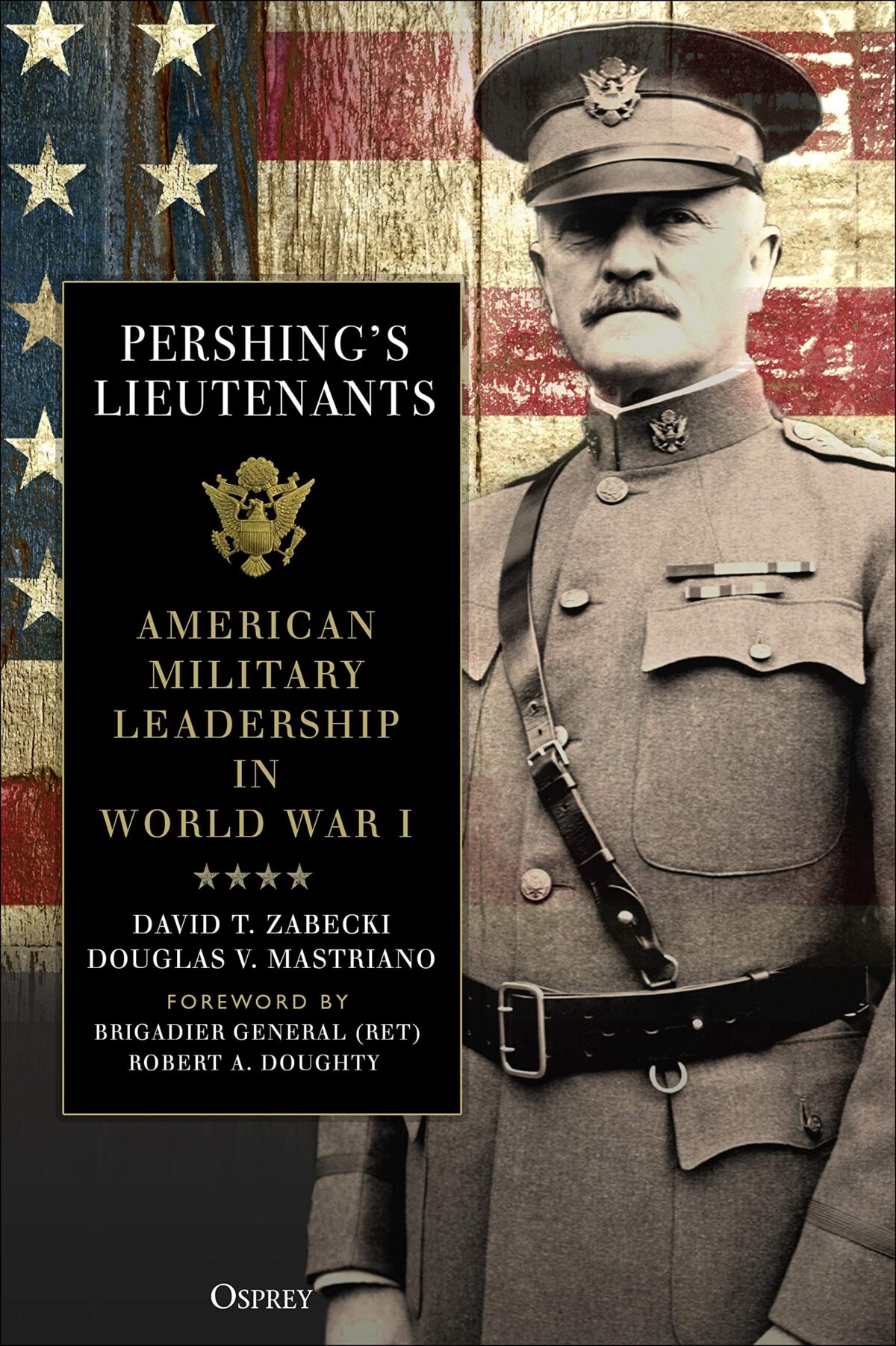Pershing’s Lieutenants: American Military Leadership in World War I. Zabecki, David T. & Douglas V. Mastriano, eds. New York: Osprey, 2020.
It’s impossible to study modern European empires without coming into contact with the First World War in some way. While the Great War has fittingly become something of a secondary focus for me, there is one element of that history that I have always been, ironically, under-read on: the American experience of the war. When I noticed Pershing’s Lieutenants, then, I thought I’d found a way to not only rectify that oversight but also increase my familiarity with one of the most overlooked generations of officers in the United States military. In its pages, I found even more: an implicit study of the evolution of the US military across half a century.
Pershing’s Lieutenants is an edited compilation of micro-biographies, each covering the war service and, briefly, lives of the most notable American officers of the First World War. While I had been hoping for more of a cohesive treatment of the subject, reading through a collection in this way comes with its own advantages. When considered as almost a series of microhistories, read in rapid succession, a number of historical themes become not only visible, but reinforced through their repetition. As others, including some of the authors included in Pershing’s Lieutenants, have observed, the United States Army was woefully unprepared for its participation in the First World War. This was by design; in accordance with his wish to remain neutral in the global conflict, President Woodrow Wilson forbade his military from even embarking on theoretical readiness exercises before America’s ultimate entry into the war. Instead of a fearsome fighting force, the US military at the turn of the twentieth century was instead more of a constabulary for the country’s imperial possessions. Without fail, the officers of Pershing’s Lieutenants begin their careers either in at Western forts, fighting in the Spanish American War, or policing the Philippines; many experienced all three. Once in Europe, these officers confronted not just veteran soldiers of the Central Powers, but a split in tactical doctrine among their own command staff. Some, loyal to Pershing, subscribed to his doctrine of unrelenting infantry frontal assault; others listened to their experienced British and French allies and recommended combined arms warfare. These events play out, over and again, and readers cannot help but begin to see the patterns.
The problem with Pershing’s Lieutenants, however, is that once you understand the historical threads at work, all that is left is a repetitive account of the minutiae of military history. The similar careers of these men soon blend together, with their distinguishing details seeming more like flavor text from a game (“This is the guy who gives a bonus to your artillery; that guy gives you an extra attack per round”). Ultimately, while I appreciated the bigger history on display, Pershing’s Lieutenants is precisely what its authors likely intended it to be: a work of history for the military history buff. Informative, certainly, but just slightly too myopic for my tastes. Useful reference material, but I wouldn’t necessarily recommend it for reading unless you really like service records.
